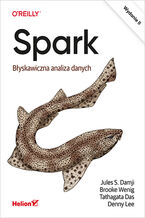SQL Query Design Patterns and Best Practices. A practical guide to writing readable and maintainable SQL queries using its design patterns Steve Hughes, Dennis Neer, Dr. Ram Babu Singh, Shabbir H. Mala, Leslie Andrews, Chi Zhang




- Autorzy:
- Steve Hughes, Dennis Neer, Dr. Ram Babu Singh, Shabbir H. Mala, Leslie Andrews, Chi Zhang
- Wydawnictwo:
- Packt Publishing
- Ocena:
- Stron:
- 270
- Dostępne formaty:
-
PDFePub
Opis
książki
:
SQL Query Design Patterns and Best Practices. A practical guide to writing readable and maintainable SQL queries using its design patterns
This book will guide you through making efficient SQL queries by reducing set sizes for effective results. You’ll learn how to format your results to make them easier to consume at their destination. From there, the book will take you through solving complex business problems using more advanced techniques, such as common table expressions and window functions, and advance to uncovering issues resulting from security in the underlying dataset. Armed with this knowledge, you’ll have a foundation for building queries and be ready to shift focus to using tools, such as query plans and indexes, to optimize those queries. The book will go over the modern data estate, which includes data lakes and JSON data, and wrap up with a brief on how to use Jupyter notebooks in your SQL journey.
By the end of this SQL book, you’ll be able to make efficient SQL queries that will improve your report writing and the overall SQL experience.
Wybrane bestsellery
Packt Publishing - inne książki
Dzięki opcji "Druk na żądanie" do sprzedaży wracają tytuły Grupy Helion, które cieszyły sie dużym zainteresowaniem, a których nakład został wyprzedany.
Dla naszych Czytelników wydrukowaliśmy dodatkową pulę egzemplarzy w technice druku cyfrowego.
Co powinieneś wiedzieć o usłudze "Druk na żądanie":
- usługa obejmuje tylko widoczną poniżej listę tytułów, którą na bieżąco aktualizujemy;
- cena książki może być wyższa od początkowej ceny detalicznej, co jest spowodowane kosztami druku cyfrowego (wyższymi niż koszty tradycyjnego druku offsetowego). Obowiązująca cena jest zawsze podawana na stronie WWW książki;
- zawartość książki wraz z dodatkami (płyta CD, DVD) odpowiada jej pierwotnemu wydaniu i jest w pełni komplementarna;
- usługa nie obejmuje książek w kolorze.
Masz pytanie o konkretny tytuł? Napisz do nas: sklep@helion.pl
Książka drukowana


































Oceny i opinie klientów: SQL Query Design Patterns and Best Practices. A practical guide to writing readable and maintainable SQL queries using its design patterns Steve Hughes, Dennis Neer, Dr. Ram Babu Singh, Shabbir H. Mala, Leslie Andrews, Chi Zhang
(0)